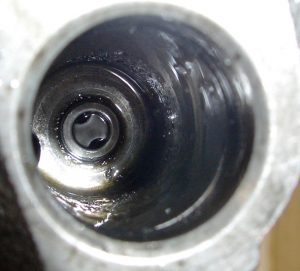The importance of oil in timing chain kit replacement.
In recent years we’ve witnessed a resurgence in the use of timing chains on OE vehicles. To meet the demands of modern applications, the latest generation of chains has been subject to improvements in manufacturing and materials and are now longer, lighter, quieter and stronger to cope with increased forces that are caused by the low friction oil filled atmosphere.
What is the main cause of chain failure?
The majority of replacements that we see are due to chain wear, and this is usually attributed to an oil issue. Our lab tests of oil from failed engines have shown that the wrong grade/specification or poor maintenance have caused contaminants (carbon, metal particles, water, fuel etc.) to be suspended within the oil. These foreign bodies/compounds are carried around the engine and can cause premature wear of the chain and sprockets. The debris blocks the feed holes and non-return valves into the tensioner(s) and variable valve timing (VVT) hubs, which eventually starves the tensioner and VVT of oil, rendering it useless.
These factors mean it is imperative that the utmost care is taken to ensure the sump, oil galleries and oil pump are clean and undamaged when fitting a new timing chain kit. A replacement filter should also be fitted as well as the use of new oil.
Kit’s the business
Due to the high demand in the aftermarket for timing chain kits, FAI introduced its own TCK program six years ago with considerable investment in the development of its range and manufacturing processes.
The company now has over 320 part numbers in its comprehensive catalogue, covering a large percentage of the European and Asian car parc.
Each FAI kit contains all the timing components required for the job, including VVT hubs (when applicable), along with the bolts, oil seals, gaskets, RTV silicon and oil spray pipes, where required. Most garages now replace TCKs on a weekly basis, which in turn brings in good business, and the kits ensure that the technician has all the parts they require without having to source from multiple suppliers.
Warning labels
In addition to leaflets showing best practice and technical help in each kit, FAI made the decision to add an ‘Oil Warning’ label to every kit box, informing the installer about which grade of oil is needed for the engine.
This information should also be passed on to the owner to ensure they continue to use the correct oil in future, because if they replenish with the wrong grade or a cheaper oil then they could be looking at a very expensive repair. FAI also includes two self adhesive labels in each kit to show the date of installation and the grade of oil used by the installer. These should be stuck to the log book and on the bonnet slam panel to remind the owner of the grade needed.
If that’s not enough then FAI has also issued a Timing Chain Kit fault diagnosis poster to assist in the identification of faults and how to solve them.










